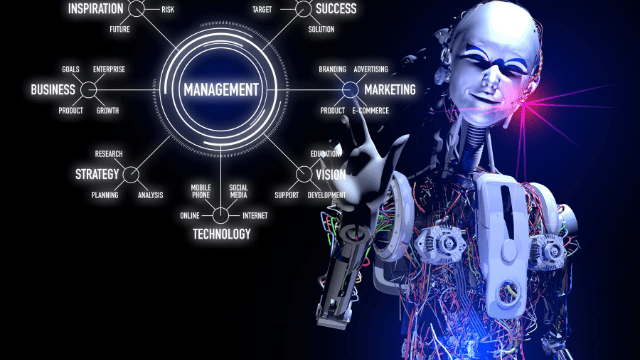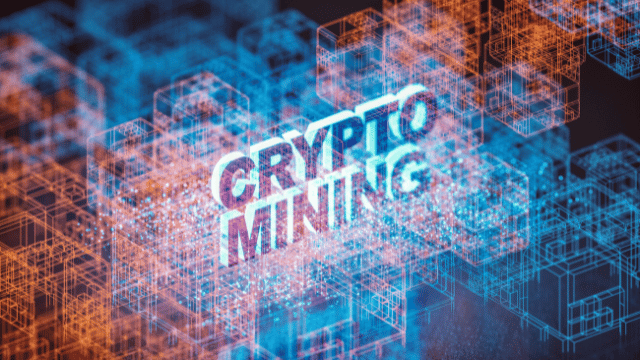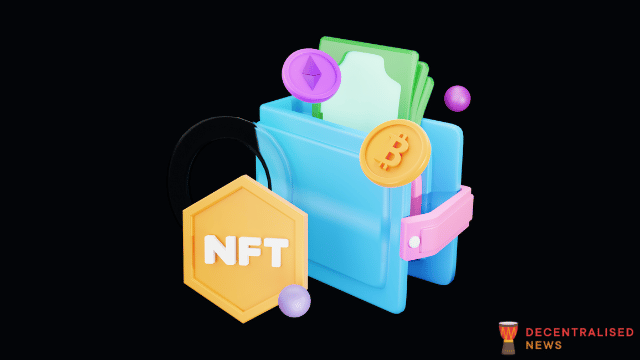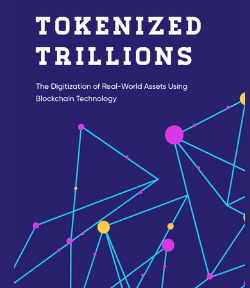
Artificial Intelligence (AI) & Blockchains (Crypto) – The New Frontiers of Innovation?
Why AI & Blockchain Will Change The Future.
Artificial Intelligence (AI) has the potential to revolutionize many industries and aspects of society, leading to increased efficiency and productivity, improved decision making, and new and improved products and services. AI is also expected to play a major role in addressing complex global challenges such as climate change, healthcare, and education. The future of AI is expected to bring even more advanced and sophisticated applications, leading to further advancements in fields such as autonomous vehicles, personalized medicine, and smart cities. AI has the potential to greatly improve our lives and create new opportunities, but it also presents important ethical and societal challenges that must be addressed.
What is the relationship between AI and blockchains?
AI and blockchain are two separate and distinct technologies, but they can be combined and integrated to enhance each other in various ways.
For example, AI algorithms can be used to analyze and optimize the performance of blockchain systems, while blockchain can provide the secure and transparent environment needed to ensure the validity and reliability of AI systems. Additionally, blockchain can help ensure the trustworthiness of data used to train AI algorithms, ensuring that the results are not biased and that the algorithms are trustworthy.
Another example is the use of AI and blockchain together in decentralized applications and platforms, where AI algorithms can be used to perform complex tasks and make decisions, while blockchain can provide the secure and transparent infrastructure for data management, transfer, and payment.
In summary, the relationship between AI and blockchain is complementary, as each technology can help enhance the capabilities and benefits of the other, providing new and innovative solutions across various domains and industries.
Top AI & Big Data Cryptocurrencies
Top 5 AI powered crypto trading platforms
There are several AI-powered crypto trading platforms available in the market. Here are some examples:
-
Kavout: Kavout is an AI-powered platform that provides investment management and trading services for cryptocurrencies. It uses machine learning algorithms to analyze market data and provide trading recommendations to its users.
-
Trademindx: Trademindx is an AI-powered trading platform that uses natural language processing and machine learning algorithms to analyze market data and provide trading signals for cryptocurrencies. It provides real-time market insights and forecasts to its users.
-
AlgoTrader: AlgoTrader is a multi-asset algorithmic trading platform that supports cryptocurrencies. It provides users with a range of trading strategies and tools powered by AI, including machine learning algorithms for price prediction, technical analysis, and risk management.
-
Peculium: Peculium is an AI-powered platform that uses machine learning algorithms to analyze market data and provide trading recommendations for cryptocurrencies. It provides users with real-time insights and trading signals, and also supports automated trading through its AI-powered trading bot.
-
Zignaly: Zignaly is an AI-powered platform that provides trading signals and portfolio management tools for cryptocurrencies. It uses machine learning algorithms to analyze market data and provide real-time trading recommendations to its users.
These are just a few examples of the many AI-powered crypto trading platforms available in the market. As the demand for AI-powered trading tools continues to grow, it is likely that we will see even more innovative and powerful platforms emerge in the future.

AI and blockchain technology have a wide range of potential applications beyond the crypto industry. Here are some examples:
-
Supply Chain Management: AI and blockchain technology can be used to create more efficient and transparent supply chains. By using blockchain to track goods and AI to analyze data from sensors and other sources, businesses can gain real-time insights into their supply chains, improve logistics, and reduce waste.
-
Healthcare: AI and blockchain technology can be used to improve healthcare outcomes. By using blockchain to securely store medical records and AI to analyze patient data, doctors and researchers can gain deeper insights into diseases, create personalized treatment plans, and improve health outcomes.
-
Identity Management: AI and blockchain technology can be used to create more secure and decentralized identity systems. By using blockchain to store identity data and AI to verify identities, individuals can more easily and securely access online services without the need for traditional authentication methods.
-
Voting: AI and blockchain technology can be used to create more secure and transparent voting systems. By using blockchain to securely store voting records and AI to verify the authenticity of votes, governments can ensure that elections are free and fair, and reduce the risk of fraud and tampering.
-
Energy Management: AI and blockchain technology can be used to create more efficient and sustainable energy systems. By using blockchain to securely store and trade energy credits and AI to optimize energy use and production, businesses and governments can reduce waste, improve energy efficiency, and accelerate the transition to renewable energy.
Overall, the potential applications of AI and blockchain technology are vast and varied, with the potential to create more efficient, transparent, and secure systems across a wide range of industries and use cases. As these technologies continue to mature, it is likely that we will see even more innovative and impactful applications emerge in the years to come.

How AI can be used to improve decentralized finance (DeFi) platforms
AI can be used to improve decentralized finance (DeFi) platforms in several ways:
-
Fraud detection: AI algorithms can be used to detect and prevent fraud on DeFi platforms, which is a significant risk in decentralized systems. By analyzing transaction data and identifying patterns of fraudulent activity, AI can help prevent fraud on DeFi platforms.
-
Risk management: AI can be used to manage risk in DeFi lending and borrowing protocols by analyzing data on borrower creditworthiness, collateral value, and market volatility. By analyzing this data and using machine learning to identify patterns and trends, AI can help identify and manage risk on DeFi platforms.
-
Liquidity provision: AI can be used to provide liquidity on DeFi platforms by analyzing market data and identifying opportunities to provide liquidity. By analyzing market conditions and using machine learning to identify opportunities for liquidity provision, AI can help ensure that DeFi markets have sufficient liquidity to function effectively.
-
Price prediction: AI can be used to predict future prices of DeFi assets, which can help traders and investors make more informed decisions. By analyzing historical data and using machine learning to identify patterns and trends, AI can provide more accurate price predictions, reducing the risk of price volatility and helping to ensure the stability of DeFi markets.
Overall, AI has the potential to significantly improve the security, efficiency, and effectiveness of DeFi platforms by providing real-time fraud detection, risk management, liquidity provision, and more accurate price predictions. However, it is important to note that AI is not a panacea and should be used in conjunction with other best practices to ensure the security and integrity of DeFi platforms.
How AI be used to improve the scalability of blockchain technology
Yes, AI can be used to improve the scalability of blockchain technology. One of the biggest challenges of blockchain technology is its limited scalability, which is a result of the fact that every node in the network needs to process and validate every transaction. As the number of users and transactions on the network grows, this can cause significant performance issues.
Here are a few ways in which AI can be used to improve the scalability of blockchain technology:
-
Data compression: AI can be used to compress blockchain data, reducing the amount of data that needs to be stored and transmitted. By using machine learning algorithms to identify patterns in blockchain data and remove redundant or unnecessary information, AI can reduce the size of the blockchain, making it easier to store and transmit.
-
Smart routing: AI can be used to optimize transaction routing in blockchain networks, ensuring that transactions are processed as efficiently as possible. By analyzing transaction data and identifying the optimal routing paths, AI can help ensure that transactions are processed quickly and with minimal overhead.
-
Consensus optimization: AI can be used to optimize the consensus algorithms used in blockchain networks, improving their performance and scalability. By analyzing transaction data and identifying the most efficient consensus algorithms, AI can help ensure that blockchain networks can scale to support large numbers of users and transactions.
-
Resource allocation: AI can be used to optimize the allocation of resources in blockchain networks, such as computing power and storage. By analyzing network data and identifying the most efficient ways to allocate resources, AI can help ensure that blockchain networks can scale to support large numbers of users and transactions.
How AI can be used to improve the efficiency of crypto exchanges
-
Trade matching and execution: AI algorithms can be used to improve the speed and accuracy of trade matching and execution. By analyzing historical trading data and real-time market data, AI can make more accurate predictions about market movements and help ensure that trades are executed at the best possible prices.
-
Fraud detection: AI can be used to detect and prevent fraud on crypto exchanges. By analyzing trading data and identifying suspicious activity, AI algorithms can alert exchange operators to potential fraudulent transactions, preventing losses and protecting the integrity of the exchange.
-
Risk management: AI can be used to help manage risk on crypto exchanges. By analyzing trading data and identifying patterns and trends, AI can help exchange operators identify potential risks and take action to mitigate them.
-
Customer service: AI can be used to provide better customer service on crypto exchanges. By analyzing user behavior and identifying common issues, AI can help provide faster and more accurate responses to customer queries, reducing response times and improving user satisfaction.
-
Compliance and regulation: AI can be used to ensure compliance with regulatory requirements on crypto exchanges. By analyzing trading data and identifying potential violations, AI algorithms can help exchange operators ensure that they are in compliance with relevant regulations and avoid penalties or fines.
Can AI improve the accuracy of cryptocurrency price predictions?
Yes, AI can improve the accuracy of cryptocurrency price predictions. One of the key advantages of using AI in price prediction is its ability to analyze large amounts of data from multiple sources and identify patterns and trends that may be difficult for humans to detect. By analyzing data from a wide range of sources, including social media, news articles, and trading data, AI can help identify the factors that are driving cryptocurrency prices and make more accurate predictions.
Some of the specific ways in which AI can improve the accuracy of cryptocurrency price predictions include:
-
Identifying trends and patterns: AI can be trained to identify trends and patterns in cryptocurrency price movements, as well as the factors that are driving these movements. By analyzing data from multiple sources and identifying these patterns, AI can make more accurate price predictions.
-
Sentiment analysis: AI can be used to analyze social media posts, news articles, and other sources of data to determine the sentiment of investors and traders. This can help predict how these individuals are likely to react to changes in the market and provide insight into future price movements.
-
Technical analysis: AI can analyze historical price data and use this information to make predictions about future price movements. By identifying key technical indicators and patterns in the data, AI can make more accurate predictions about future price movements.
-
Machine learning: AI can be trained using historical price data to make predictions about future price movements. By continuously learning from new data and adjusting its algorithms, AI can improve the accuracy of its predictions over time.
Overall, AI has the potential to significantly improve the accuracy of cryptocurrency price predictions. By analyzing data from multiple sources and identifying trends and patterns, AI can help investors and traders make more informed decisions and reduce the risk of losses. However, it is important to note that no prediction method is 100% accurate, and there is always a degree of uncertainty when it comes to cryptocurrency prices. Therefore, it is important to use AI predictions as one tool among many in making investment decisions.
How AI can be used to identify patterns in cryptocurrency trading
Yes, AI can be used to identify patterns in cryptocurrency trading. In fact, one of the most promising applications of AI in the crypto industry is its ability to analyze large volumes of data and identify patterns and trends that might not be apparent to human traders.
AI algorithms can be trained to analyze historical trading data and identify patterns that may indicate a potential trend or market movement. For example, machine learning algorithms can be used to identify correlations between different market variables, such as price, volume, and volatility, and use these correlations to make predictions about future market movements.
In addition to identifying patterns in historical data, AI can also be used to analyze real-time market data and provide real-time trading recommendations. By using machine learning to analyze large volumes of real-time data, AI algorithms can quickly identify and respond to changes in market conditions and provide traders with up-to-date recommendations on which trades to make.
Overall, AI’s ability to identify patterns in cryptocurrency trading can provide traders with valuable insights into market trends and movements, which can help them make more informed trading decisions. However, it is important to note that AI is not a panacea and should be used in conjunction with other trading tools and strategies to achieve the best results.

How AI be used to enhance the performance of crypto mining operations
Yes, AI can be used to enhance the performance of crypto mining operations. In fact, there are already several examples of AI being used to optimize mining operations and increase efficiency.
Here are a few ways in which AI can be used to enhance the performance of crypto mining operations:
-
Predictive maintenance: AI algorithms can be used to predict when mining hardware is likely to fail, allowing miners to perform maintenance and repairs proactively. By analyzing sensor data from mining equipment, AI can identify patterns of wear and tear and predict when components are likely to fail, allowing miners to take action before a failure occurs.
-
Energy optimization: Mining cryptocurrency requires a significant amount of energy, so optimizing energy usage is a key way to improve efficiency. AI can be used to analyze energy usage data and identify ways to optimize energy consumption, such as identifying the optimal time to mine or reducing energy consumption during periods of low demand.
-
Algorithm optimization: Mining cryptocurrency requires complex mathematical calculations, and the efficiency of these calculations can be improved through algorithm optimization. AI can be used to identify the most efficient algorithms and optimize them for specific hardware configurations, improving mining performance and reducing energy usage.
-
Resource allocation: AI can be used to optimize resource allocation in mining operations, such as allocating computing power to specific mining pools or optimizing the use of storage and network bandwidth.
Can AI be used to improve the accuracy of Know Your Customer (KYC) processes?
Yes, AI can be used to improve the accuracy and efficiency of Know Your Customer (KYC) processes. KYC is a critical process for financial institutions and cryptocurrency exchanges, as it helps to prevent money laundering, fraud, and other financial crimes. However, traditional KYC processes can be time-consuming and expensive, requiring manual review and verification of identity documents.
Here are some ways in which AI can be used to improve KYC processes:
-
Automated document verification: AI can be used to automatically verify the authenticity of identity documents, such as passports and driver’s licenses. By using machine learning algorithms to analyze document features such as holograms, watermarks, and fonts, AI can quickly and accurately verify the authenticity of documents, reducing the need for manual review.
-
Facial recognition: AI can be used to verify the identity of individuals by analyzing facial features and comparing them to identity documents. By using facial recognition algorithms, AI can quickly and accurately verify the identity of individuals, reducing the risk of fraud and improving the accuracy of KYC processes.
-
Risk assessment: AI can be used to assess the risk level of customers based on their transaction history, behavior patterns, and other factors. By using machine learning algorithms to analyze transaction data and identify patterns that are indicative of high-risk behavior, AI can help financial institutions and cryptocurrency exchanges to identify potential risks and prevent financial crimes.
-
Natural language processing: AI can be used to analyze text-based data, such as customer support messages or social media posts, to identify potential risks or red flags. By using natural language processing algorithms to analyze text data, AI can help financial institutions and cryptocurrency exchanges to identify potential risks and prevent financial crimes.
How AI can be used to improve the interoperability of different cryptocurrencies
Interoperability is the ability of different blockchain networks to communicate and share information with each other. This is a critical feature for the widespread adoption of cryptocurrencies, as it enables users to seamlessly transfer value between different networks. While there are many technical challenges to achieving interoperability, AI can play a role in improving the efficiency and effectiveness of interoperability solutions. Here are some ways in which AI can be used to improve the interoperability of different cryptocurrencies:
-
Smart contract analysis: AI can be used to analyze smart contracts on different blockchains, identifying commonalities and differences in their functionality. This can help developers to create cross-chain applications that can interact with multiple blockchains, facilitating interoperability.
-
Network analysis: AI can be used to analyze the structure and behavior of different blockchain networks, identifying potential points of interoperability and integration. This can help developers to create interoperability solutions that are tailored to the specific needs of different networks.
-
Data standardization: AI can be used to standardize data formats and structures across different blockchain networks, facilitating interoperability. By analyzing data from different networks and identifying common patterns and structures, AI can help to create standardized formats that can be used across multiple blockchains.
-
Protocol optimization: AI can be used to optimize the protocols used for interoperability, improving their performance and scalability. By analyzing transaction data and identifying the most efficient protocols for transferring value between different networks, AI can help to ensure that interoperability solutions are fast, secure, and efficient.
How can AI help prevent crypto market manipulation?
AI can help prevent crypto market manipulation in several ways:
-
Market surveillance: AI algorithms can be used to monitor trading activity on crypto exchanges and identify patterns that may be indicative of market manipulation. By analyzing large volumes of trading data and using machine learning to identify suspicious activity, AI algorithms can help detect and prevent market manipulation in real-time.
-
Sentiment analysis: AI can be used to analyze social media and news feeds for sentiment about specific cryptocurrencies or market movements. This can help identify potential market manipulation attempts by detecting coordinated efforts to influence sentiment and manipulate prices.
-
Fraud detection: AI algorithms can be used to detect and prevent fraud on crypto exchanges, which is often used as a tactic in market manipulation schemes. By analyzing trading data and identifying patterns of fraudulent activity, AI can help prevent market manipulation by identifying and blocking fraudulent trades.
-
Price prediction: AI can be used to predict future cryptocurrency prices, which can help prevent market manipulation by providing investors with more accurate information about market movements. By analyzing historical price data and using machine learning to identify patterns and trends, AI can help provide more accurate price predictions, reducing the likelihood of manipulation based on inaccurate information.
Overall, AI has the potential to significantly improve the security and integrity of the crypto markets by providing real-time market surveillance, sentiment analysis, fraud detection, and more accurate price predictions. However, it is important to note that AI is not a panacea and should be used in conjunction with other security measures and best practices to ensure the security and integrity of the crypto markets.
![]() How does AI-powered fraud detection help prevent crypto scams?
How does AI-powered fraud detection help prevent crypto scams?
AI-powered fraud detection can help prevent crypto scams in several ways:
-
Identifying suspicious patterns: AI algorithms can be trained to identify suspicious patterns of behavior, such as repeated attempts to withdraw funds or unusual trading activity. By monitoring user activity on crypto exchanges and identifying potential red flags, AI can help prevent fraudulent activity before it occurs.
-
Real-time monitoring: AI can provide real-time monitoring of crypto transactions, which can help prevent scams by detecting and blocking suspicious activity as it happens. By analyzing large volumes of data in real-time, AI can quickly identify and respond to potential scams and fraudulent activity.
-
Predictive analytics: AI can use predictive analytics to identify patterns and trends that may indicate a potential scam. By analyzing historical data and using machine learning algorithms to identify patterns and anomalies, AI can help identify potential scams before they happen, providing users with advanced warning and preventing financial loss.
-
Natural language processing: AI can analyze text and voice communication for indicators of fraudulent activity. By analyzing communication between users on crypto platforms and identifying potential scams, AI can help prevent fraudulent activity before it occurs.

5 Ways AI can be used to improve the security of cryptocurrency wallets
Yes, AI can be used to improve the security of cryptocurrency wallets. Cryptocurrency wallets are an attractive target for cybercriminals, as they can be used to store large amounts of valuable assets. AI can help address some of the security challenges associated with cryptocurrency wallets in several ways:
-
Fraud detection: AI algorithms can be trained to identify fraudulent transactions and alert users to potential threats. This can help prevent unauthorized access to cryptocurrency wallets and reduce the risk of theft.
-
Risk assessment: AI can be used to assess the risk associated with particular transactions, users, and devices. This can help detect suspicious activity and prevent unauthorized access to cryptocurrency wallets.
-
Behavioral analysis: AI can analyze user behavior to identify patterns and anomalies that may indicate fraudulent activity. This can help detect and prevent attacks before they can do significant damage.
-
Two-factor authentication: AI can be used to enhance the security of two-factor authentication by analyzing biometric data and verifying the identity of users more accurately.
-
Predictive maintenance: AI can be used to identify potential security threats in advance and take action to prevent them. For example, AI can identify vulnerabilities in wallets and suggest updates or patches to prevent attacks.
What are some challenges in applying AI to the crypto industry?
There are several challenges in applying AI to the crypto industry, including:
-
Limited availability of high-quality data: AI models require large amounts of high-quality data to learn from, but in the crypto industry, the availability of such data can be limited. This can make it difficult to build accurate models and limit their effectiveness.
-
Volatility of the crypto markets: Crypto markets are notoriously volatile, and this can pose a challenge for AI models, which may struggle to adapt to rapid changes in market conditions. This can limit the effectiveness of these models and reduce their potential value to investors.
-
Lack of standardization: The crypto industry is still relatively new and lacks the standardization that exists in more established markets. This can make it difficult to apply AI models consistently across different platforms and exchanges, limiting their potential value.
-
Complexity of the crypto industry: The crypto industry can be complex, with a wide range of different cryptocurrencies, exchanges, and other platforms. This complexity can make it difficult to apply AI models effectively, as they may struggle to account for all the relevant variables and factors.
-
Regulatory uncertainty: The regulatory landscape for the crypto industry is still evolving, and this can create uncertainty for AI developers and investors. This uncertainty can limit the adoption of AI in the industry and limit the potential benefits it could offer.
What are some potential risks associated with using AI in the crypto industry?
There are several potential risks associated with using AI in the crypto industry, including:
-
Security risks: AI systems can be vulnerable to hacking, and malicious actors may exploit these vulnerabilities to gain access to sensitive information, such as private keys or user data.
-
Manipulation risks: AI algorithms can be used to manipulate markets by creating fake trading volumes or generating false news stories. This could lead to market instability and impact investor confidence.
-
Lack of transparency: AI models can be complex, making it difficult to understand how they make decisions or identify potential biases. This lack of transparency can be a problem in the crypto industry, where investors need to trust that the technology is working in their best interests.
-
Regulatory risks: As AI becomes more prevalent in the crypto industry, regulators may struggle to keep up with the pace of technological change. This could result in a lack of clear rules and guidelines, which could create uncertainty for investors and limit the growth of the industry.
-
Volatility risks: Crypto markets are notoriously volatile, and the use of AI could exacerbate this volatility if algorithms are designed to take advantage of price movements. This could lead to significant losses for investors and impact the stability of the overall market.
Overall, the use of AI in the crypto industry offers many potential benefits, but it is important to be aware of the risks associated with this technology. To mitigate these risks, companies and investors should take a cautious approach to the adoption of AI and work to ensure that these systems are secure, transparent, and compliant with relevant regulations.






